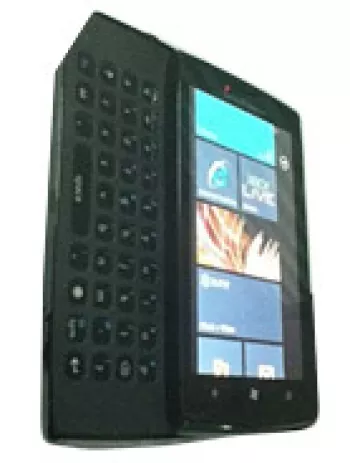Sony Ericsson W850 The Complete Specs Pricing & Performance Review

Overview of Sony Ericsson W850
The Sony Ericsson W850 was a standout model in the mid-2000s, representing a significant milestone in mobile technology primarily due to its innovative features and design. Launched in May 2006 and released to the market by September of the same year, the W850 quickly gained traction amongst consumers for its multimedia capabilities and robust build. This device marked Sony Ericsson's continual commitment to providing high-quality Walkman phones that catered particularly to music enthusiasts.
Design and Build
The Sony Ericsson W850 features a sleek and compact design with dimensions of 98 x 47 x 21 mm and weighs 116 grams, making it portable and comfortable to handle. The phone was available in two elegant color options: Precious Black and Golden White. It featured a slide mechanism, which was a popular style at that time, adding to its appeal and providing users with a tactile, engaging experience. Despite the smaller screen size of 2.0 inches, the device offered a TFT display with 256K colors, ensuring vibrant and clear visuals for the user’s enjoyment.
Display
The Sony Ericsson W850 featured a 2.0-inch display with a resolution of 240 x 320 pixels, which resulted in a pixel density of approximately 200 ppi. Although modest by today's standards, at the time, it provided sufficient clarity and brightness for its users. The screen's 4:3 ratio was standard for feature phones during that period, optimizing it for basic tasks such as browsing WAP or managing multimedia content.
Camera
The W850 was equipped with a 2 MP main camera, a notable feature for a phone from that era. The camera included an LED flash, which was useful for low-light conditions. While the video recording capabilities were limited to QCIF resolution, the phone was adept at capturing basic images and supporting a respectable level of photographic customization through various settings.
Battery Life
At its core, the W850 housed a removable Li-Po 950 mAh battery, known as the BST-33. This battery offered up to 350 hours of standby time on both 2G and 3G networks, ensuring users could remain connected over extended periods without frequent recharges. For talk time, it provided up to 7 hours on 2G networks and up to 2 hours 30 minutes on 3G, reflecting average performance in terms of energy efficiency during that period.
Multimedia and Storage
As a Walkman branded phone, the W850 really shone in terms of its multimedia capabilities. It supported a variety of audio formats, including polyphonic, MP3, and AAC ringtones. The device’s sound hardware was complemented with stereo FM radio (RDS), enhancing its appeal among music lovers. For storage, although the phone had a modest internal storage of 16MB, it included a Memory Stick Duo Pro slot, allowing expansion up to 4 GB, accommodating users' needs for extra music and media files.
Connectivity and Communication
The connectivity options on the W850 included GSM/UMTS technology, supporting 2G bands (GSM 900 / 1800 / 1900) and a 3G band (UMTS 2100). The device offered data speeds of up to 384 kbps. Additional connectivity features included Bluetooth 2.0 with A2DP support, an infrared port, and proprietary USB connectivity, covering most user requirements at the time. While WLAN and GPS were absent, the phone excelled with its core capabilities and versatility in communication through SMS, MMS, and Email.
User Interface and Operating System
Operated by a robust feature phone infrastructure, the Sony Ericsson W850 provided a straightforward and user-friendly interface. The menu system was intuitive, allowing easy navigation through its various features. The phone's ability to handle Java applications (MIDP 2.0), made it possible for users to download further games and utilities, tailoring their experience according to personal preferences.
Conclusion
Despite being discontinued, the Sony Ericsson W850 left a memorable impact due to its well-balanced combination of design, functionality, and music-centric features. Priced initially at about 200 EUR, it was competitive for the era's market. This model is often remembered fondly by enthusiasts of the Walkman phone series, exemplifying a distinct period in mobile technology where practicality and innovation combined harmoniously. Though eclipsed by subsequent smartphone innovations, the W850 still holds nostalgic value and is considered a classic in the evolution of mobile devices.
Sony Ericsson W850 Key Features
- Supports GSM and UMTS networks for broader connectivity.
- Compact with dimensions of 98 x 47 x 21 mm and lightweight at 116 g.
- 2.0 inches TFT display with 256K colors and a resolution of 240 x 320 pixels.
- Memory Stick Duo Pro card slot, supporting up to 4 GB of external storage.
- 2 MP main camera with LED flash for better photo quality in low light.
- Includes a videocall camera for selfie and video calling features.
- Bluetooth 2.0 with A2DP for wireless audio streaming.
- Stereo FM radio with RDS for music and news on the go.
- Removable Li-Po 950 mAh battery with up to 350 hrs standby time on 2G.
- Available in stylish colors: Precious Black and Golden White.
Disadvantages of Sony Ericsson W850
- No WLAN support, limiting wireless internet connectivity options.
- Lack of 3.5mm headphone jack, requiring proprietary accessories for audio.
- Limited internal storage of 16MB, necessitating reliance on memory cards for additional storage.
- Outdated 2 MP main camera with limited video recording quality (QCIF).
- No GPS functionality, affecting location-based services.
- Proprietary USB port, reducing compatibility with standard USB accessories.
- Discontinued status, impacting availability of new units and replacement parts.
- Limited battery talk time on 3G networks (up to 2 hours and 30 minutes).


View Also
More Phones
All Rights Reserved +13924 Phones © Mobilawy 2025

























